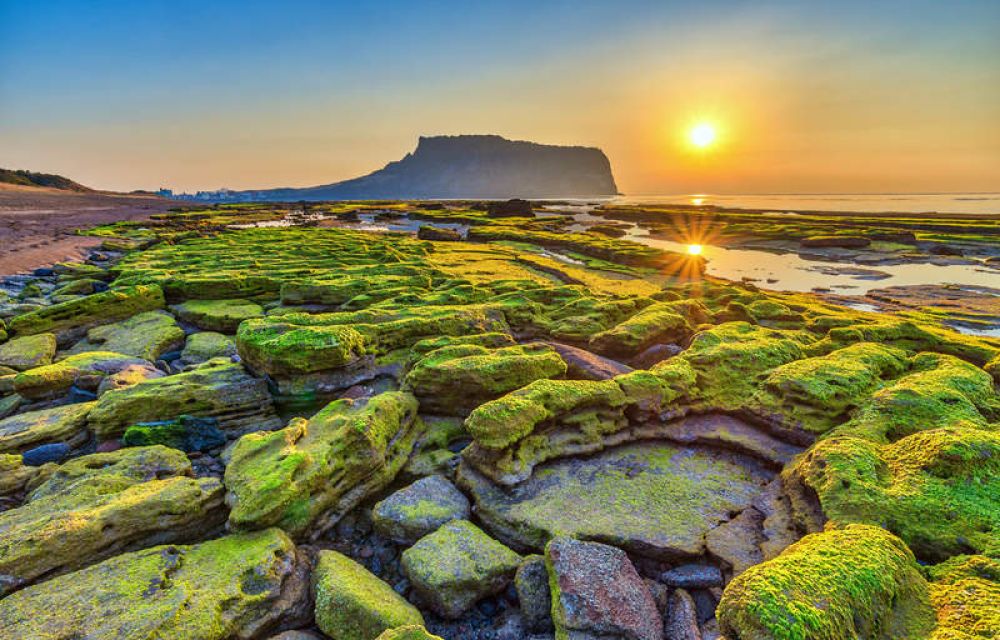

Seongsan Ilchulbong, also known as "Sunrise Peak", is a prominent natural attraction located on the eastern end of Jeju Island, South Korea. This UNESCO World Heritage site is a volcanic tuff cone formed by hydrovolcanic eruptions approximately 5,000 years ago. It's renowned for its well-preserved crater and unique geological features, attracting visitors from all around the globe who come to experience its stunning natural beauty and witness the spectacular sunrise.
The history of tourism at Seongsan Ilchulbong can be traced back to the early 20th century when Jeju Island began to gain recognition as a place of scenic beauty. However, it was not until the late 20th century that travel to Jeju and Seongsan Ilchulbong became more accessible, with increased modes of transportation and development of local infrastructure. The declaration of Seongsan Ilchulbong as a UNESCO Natural World Heritage Site in 2007 marked a significant milestone in its tourism history, leading to a substantial increase in international recognition and visitor numbers.
With the rise of eco-tourism and sustainable travel practices, Seongsan Ilchulbong has seen a shift in visitor trends focusing on conservation and education. The following are some of the latest trends in tourism for this iconic destination:
Seongsan Ilchulbong is open to visitors year-round, offering various activities and attractions such as:
To promote sustainable visitation, the management of Seongsan Ilchulbong has implemented measures such as limiting the number of visitors during sunrise and encouraging the use of public transportation to reach the site.